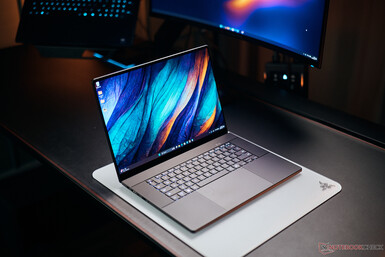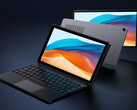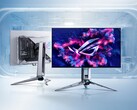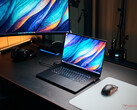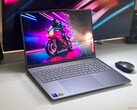After tandem OLED screens are already used for high-end tablets and TVs a while now, we now also get the first laptops with the new screen technology. It uses two illumination layers on top of each other, which results in higher brightness values and richer colors. We recently reviewed the two high-end multimedia laptops Asus ProArt P16 and Lenovo Yoga Pro 9i 16, which are equipped with the new displays. But who offers the better implementation?
Both manufacturers use 16-inch displays from Samsung with a frequency of 120 Hz, but the specifications are different. Asus has the advantage in terms of the resolution (3840 x 2400 vs. 3200 x 2000 pixels) and the maximum HDR brightness in around 1600 nits in both cases, so they are on par with the Mini-LED screen in the MacBook Pro 16. In terms of SDR brightness, Lenovo has the advantage with almost 1000 nits, while the Asus reaches almost 700 nits. The subjective image quality of the two glossy screens is excellent and the additional touch layer on the Asus does not affect the image quality.
| Asus ProArt P16 RTX 5090 ATNA60HC03-0, OLED, 3840x2400, 16", 120 Hz | Lenovo Yoga Pro 9i 16 RTX 5070 ATNA60KA01-0, OLED, 3200x2000, 16", 120 Hz | Apple MacBook Pro 16 2024 M4 Pro Mini-LED, 3456x2234, 16.2", 120 Hz | |
|---|---|---|---|
| Display | 2% | 0% | |
| Display P3 Coverage (%) | 98.9 | 97.4 -2% | 99.7 1% |
| sRGB Coverage (%) | 100 | 100 0% | 100 0% |
| AdobeRGB 1998 Coverage (%) | 88.6 | 96.8 9% | 88.8 0% |
| Response Times | 23% | -7809% | |
| Response Time Grey 50% / Grey 80% * (ms) | 0.3 ? | 0.27 ? 10% | 43 ? -14233% |
| Response Time Black / White * (ms) | 0.45 ? | 0.37 ? 18% | 41.2 ? -9056% |
| PWM Frequency (Hz) | 480 ? | 1200 | 14880 |
| PWM Amplitude * (%) | 38 | 22 42% | 90 -137% |
| Screen | -21% | -9% | |
| Brightness middle (cd/m²) | 661 | 974 47% | 632 -4% |
| Brightness (cd/m²) | 663 | 979 48% | 616 -7% |
| Brightness Distribution (%) | 99 | 98 -1% | 95 -4% |
| Black Level * (cd/m²) | |||
| Colorchecker dE 2000 * | 0.5 | 0.9 -80% | 0.6 -20% |
| Colorchecker dE 2000 max. * | 1.4 | 1.7 -21% | 1.2 14% |
| Greyscale dE 2000 * | 0.6 | 1.3 -117% | 0.8 -33% |
| Gamma | 2.19 100% | 2.21 100% | 2.21 100% |
| CCT | 6565 99% | 6751 96% | 6450 101% |
| Total Average (Program / Settings) | 1% /
-4% | -2606% /
-1957% |
* ... smaller is better
Lenovo is also ahead in terms of PWM flickering, because the frequency is above 1 kHz and the amplitude is low. We determine 480 Hz for the Asus, but there is also a software solution for flicker-free OLED dimming. Both panels are excellent for picture editing, because both manufacturers offer accurate color profiles out of the box. Lenovo even covers the wider AdobeRGB color gamut.
All in all, the two new tandem OLED screens are among the best notebook panels you can get at the moment. Asus offers the advantage of the higher resolution as well as touch, so the ProArt is the better choice for creative tasks. For common multimedia applications, however, we would choose the Lenovo (which is also available with a touchscreen, but we could not yet test whether it affects the image quality or not). For more information, please see our comprehensive reviews:





